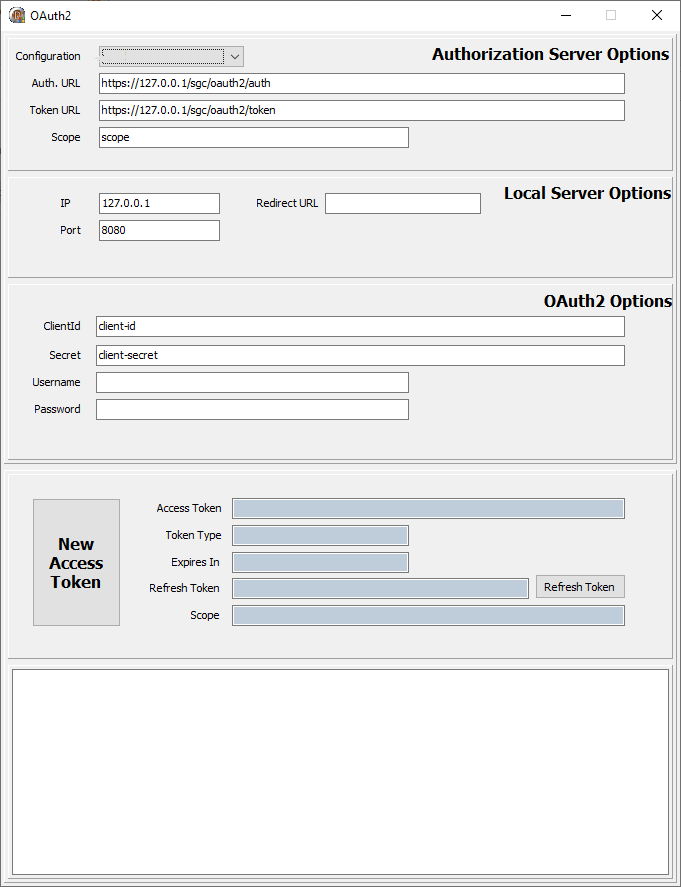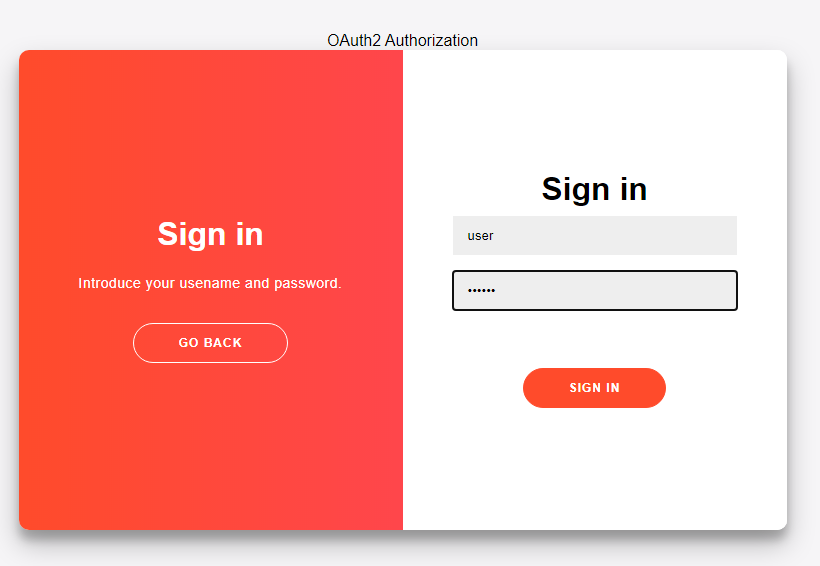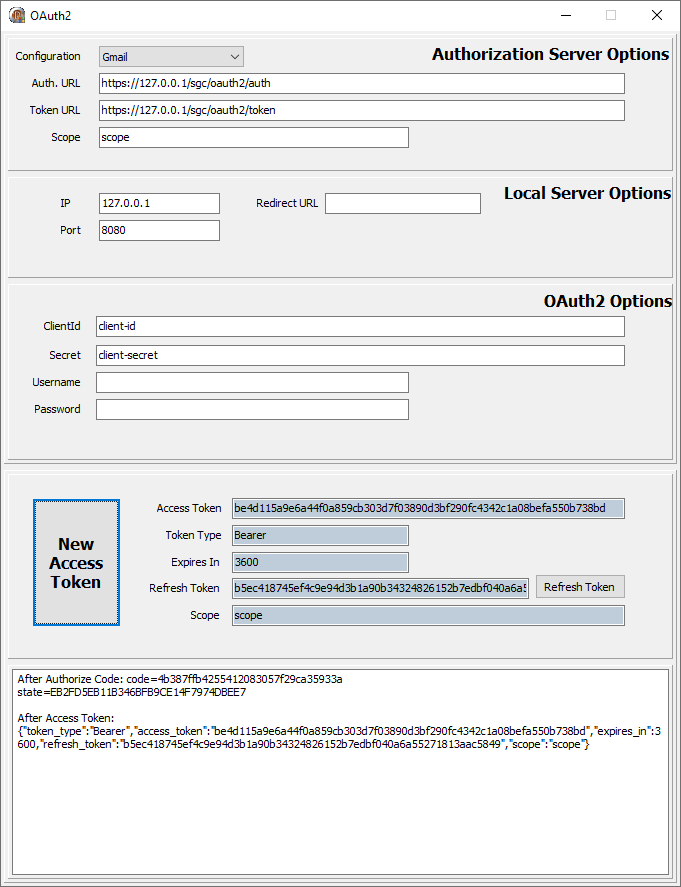OAuth2 | Server Example
Let's do a simple OAuth2 server example, using a TsgcWebSocketHTTPServer.
First, create a new TsgcWebSocketHTTPServer listening on port 443 and using a self-signed certificate in sgc.pem file.
oServer := TsgcWebSocketHTTPServer.Create(nil);
oServer.Port := 80;
oServer.SSLOptions.Port := 443;
oServer.SSLOptions.CertFile := 'sgc.pem';
oServer.SSLOptions.KeyFile := 'sgc.pem';
oServer.SSLOptions.RootCertFile := 'sgc.pem';
oServer.SSL := True;Then create a new instance of TsgcHTTP_OAuth2_Server and assign to previously created server.
Register a new Application with the following values:
Name: MyApp
RedirectURI: http://127.0.0.1:8080
ClientId: client-id
ClientSecret: client-secret
OAuth2 := TsgcHTTP_OAuth2_Server.Create(nil);
OAuth2.Apps.AddApp('MyApp', 'http://127.0.0.1:8080', 'client-id', 'client-secret');
oServer.Authentication.Enabled := True;
oServer.Authentication.OAuth.OAuth2 := OAuth2;Then handle OnOAuth2Authentication event of OAuth2 server component and implement your own method to login users. I will use the pair "user/secret" to accept a login.
procedure OnAuth2Authentication(Connection: TsgcWSConnection; OAuth2: TsgcHTTPOAuth2Request; aUser,
aPassword: string; var Authenticated: Boolean);
begin
if ((aUser = 'user') and (aPassword = 'secret')) then
Authenticated := True;
end;Finally start the server and use a OAuth2 client to login, example you can use the TsgcHTTP_OAuth2_Client included with sgcWebSockets library.

Request a New Access Token, a new Web Browser session will be shown and user must Allow connection and then login.

If login is successful a new Token will be returned to the client. Then all the requests must include this bearer token in the HTTP Headers.
